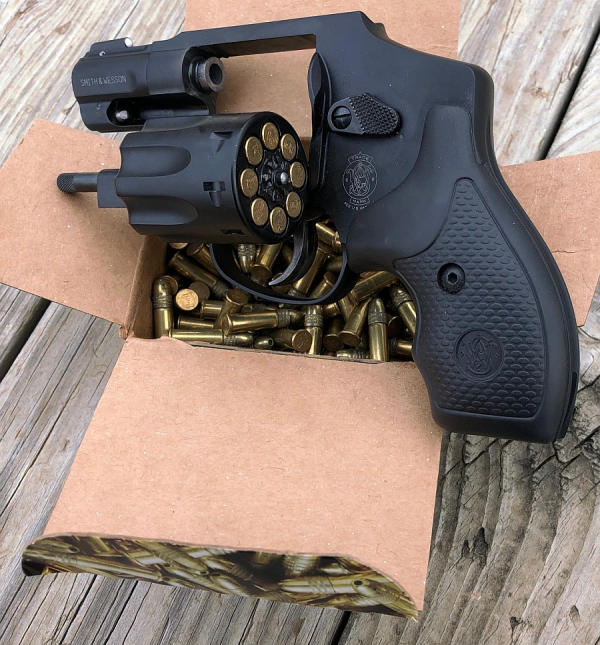
There are still ‘caliber commandos’ among us. They speak to us through the internet and at gunshops. They’re all full of “you need to carry this, never carry that.” In the touchy situations I’ve been in over the years, I never wished I had a smaller caliber gun – though there were several times I was positively thankful that I had a gun in a small form factor.
Our very own Tactical Professor Claude Werner first mentioned the “old man’s gun” as a concept – at least that I heard of – and his concept is sound. Any gun is better than no gun. There are folks that can’t handle the 38 snub nose, can’t rack the slide on a semi-auto, can’t maintain defensive hardware very well, lives in a nonpermissive environment, has medical ailments – which can be age related but don’t have to be. For them, the truly light revolver can be the answer.
I’m still working with the Smith and Wesson Model 43c. For those who don’t recall, the M43C is an 8-shot, 11-ounce 22 LR revolver with a “white ball” for a front sight – the factory literature says it’s from XS Sights. The gun has a heavy trigger, befitting the mission of making shooting deliberate and setting off rimfire cartridges.
A “Centennial” hidden-hammer revolver in .22 LR, it’s plagued with tough extraction with certain loads – first noticed with Winchester Super-X and more lately noticed with Remington Golden Bullet 36 grain HP. Strangely, some low-cost ammo like Remington’s Thunderbolt not only show very nearly the best accuracy I can get out of the flyweight revolver, extraction is easy.
As noted previously, small guns really amplify minor differences in everything from ammo solutions to shooting styles. Shooting the S&W M43c from a seated rest at 25 yards, I found that Thunderbolt ammo printed a 4 7/8” 8-shot group 7 ½” low on the target. Five of the eight rounds went into 2 ¾” – remarkable for a very light revolver with a very heavy trigger. The aforementioned Super-X went eight inches low, but put five of 8 into a 3 ¼” group on its “best of” attempt.
I also shot the little gun over a chronograph while mucking about with heavier hardware. Ammo is a concern for people interested in handguns as defense tools, rightly so. My concern is more for functional reliability, point of impact relative to point of aim and penetration. Part of the penetration characteristic is the projectile velocity.
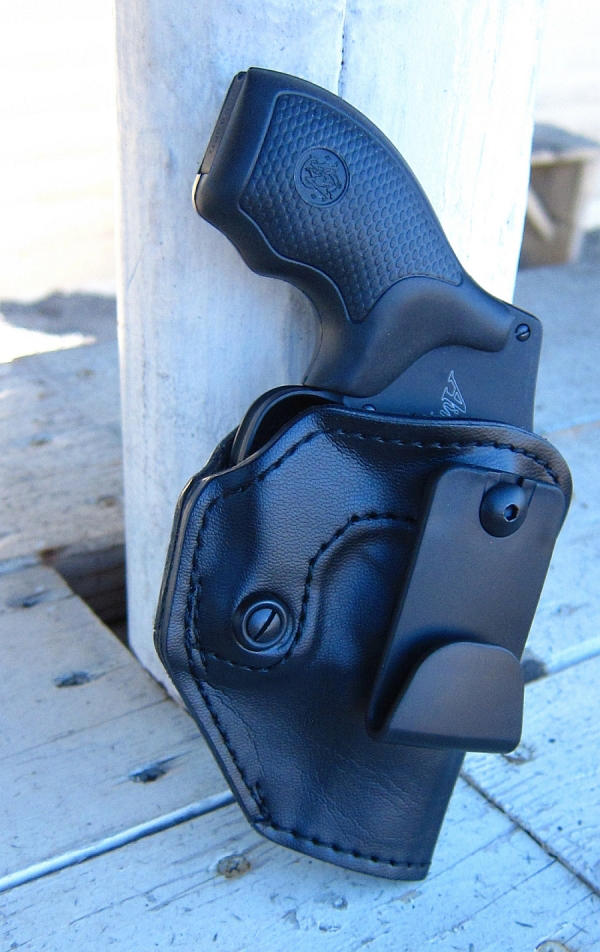
I had two loads with me on that trip, one the Winchester Super-X 40 grain solids and the other was Remington Golden Bullet 36 grain HP. The Winchester load averaged 1,067 feet-per-second and the Remington, surprisingly, averaged 954 fps. It follows that the Remington was easier to eject than Winchester from those sticky chambers.
I followed that up by trying Ken Hackathorn’s Wizard Drill on a cardboard IDPA target. I added a ca. 4-inch circle in the face of the target. For a demonstration of the Wiz, see Ken’s video.
To explain it here, start with the gun worn as you’d wear it. All starts are from the draw. Taking only five rounds, it calls for singles to the circle in the midst of the headbox inside 2.5 seconds – dominant hand only at three yards, both hands at five yards and at 7 yards, followed by a pair to the high chest “-0” from ten yards.
I had the gun in the front, inside the waist, worn in the Safariland Model 27 IWB holster. An open-top inside-the-pants holster, it features a J-hook to enable wearing it with any belt. A polymer insert prevents the holster from collapsing inside the waist and aids in reholstering.
. As it was low-30s temperature, it required some digging to get the gun out. Surprisingly I passed until I got back to ten yards, then failed by taking right at three seconds to hit, going over on time.
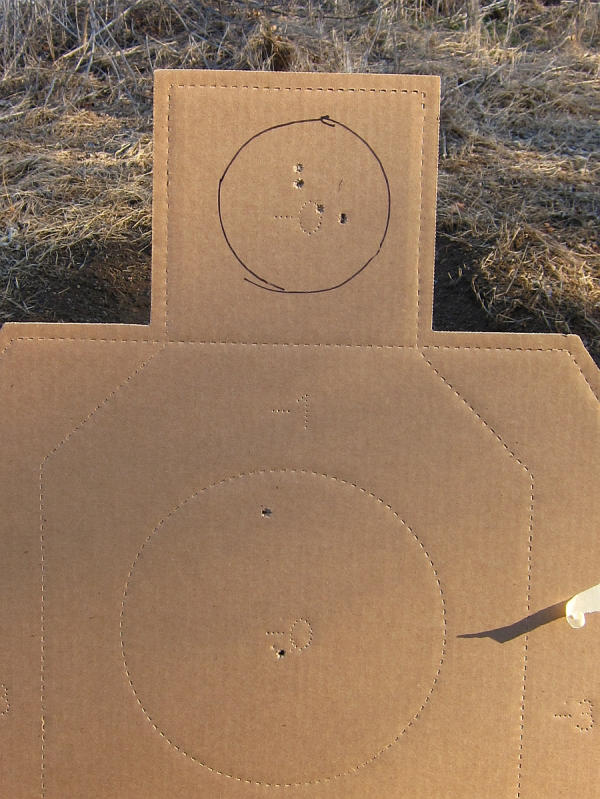
I shot Justin Dyal’s “Five-Yard Roundup” as seen in SWAT Magazine. Using a B-8 bullseye and the five yard distance, the par is the same as the Wizard Drill, 2.5 seconds. It calls for a single hit from the holster – the easiest stage, followed by four hits from the ready position of your choice, three rounds fired dominant hand only and, finally, firing a pair from the other hand ‘unsupported.’
My result was a 97 points out of the 100 possible. Understanding that I didn’t have to fight recoil – but had to keep the 11 ounce revolver still while tugging at the trigger-cocked firing sequence – I thought it was a good performance. In fact, I outshot a service pistol and a compact centerfire auto with the micro-flyweight revolver.
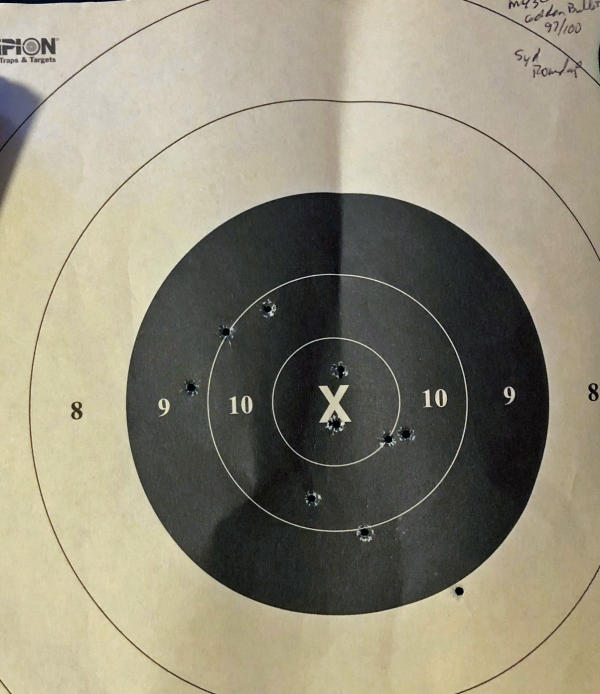
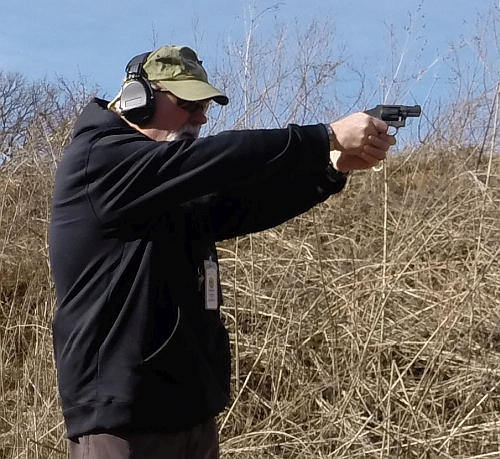
My conclusion is this: someone who’s physically compromised due to age or other infirmity and can’t handle 38/357 or can’t reliably find .32 S&W Long (whatever happened to that great old round?), the 22 is the next best. The Long Rifle is cheaper than the 22 Magnum to shoot, that helps for practice – and it’s often more available. Besides, it the S&W M43C has an eight-round capacity. You may really need all that ammunition.
The problem is the sticky extraction. I don’t recall that with the Smith & Wesson M351C – the same as our sample but in 22 Mag. It varies in the M43C. After I cleaned the chambers, it helped with some brands of ammo and not others. The best round for this individual gun thus far is still the Remington Thunderbolt, at times found on sale in 500 round packs. That makes this little heater a jewel.
If you like snubs, can’t countenance autos or if you find yourself limited to light calibers, the S&W M43C deserves your attention.
- - Rich Grassi